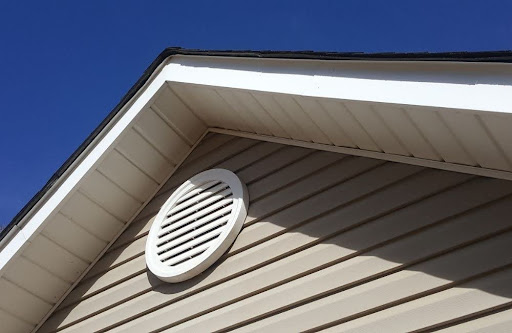Proper ventilation is one of the most important, yet often overlooked, factors in maintaining a healthy roof. Without adequate airflow, your attic can become a breeding ground for problems that impact not only your roofing materials but also your home’s energy efficiency and overall comfort. From preventing heat buildup to reducing moisture damage, attic ventilation plays a vital role in the longevity of your roof.

Why Adequate Roof Ventilation Is Important
Effective ventilation relies on a balanced system of intake and exhaust vents. Intake vents, usually located in soffits, draw fresh air into the attic, while exhaust vents, such as ridge or roof vents, push hot, humid air out. This steady circulation of air regulates attic temperature and moisture levels, protecting your roof year-round.
In summer, attic temperatures in poorly ventilated homes can exceed 150°F, causing shingles to deteriorate faster and wooden roof structures to warp. In winter, inadequate ventilation traps moisture from indoor living spaces, leading to mold growth, wood rot, and ice dam formation along the roof’s edge.
The Benefits of Proper Attic Ventilation
Extends Roof Lifespan
By preventing extreme heat and moisture buildup, attic ventilation protects shingles, wood, and other roofing materials from premature wear, adding years to your roof’s life.
Reduces Energy Costs
Balanced airflow helps regulate indoor temperatures, reducing strain on heating and cooling systems. As a result, homeowners benefit from lower energy bills and a more efficient home.
Prevents Moisture Damage and Improves Comfort
Moisture is one of the leading causes of roof and attic problems. Proper ventilation keeps the attic dry, preventing mold, mildew, and structural damage. It also helps maintain more consistent indoor comfort throughout the seasons.
Warning Signs of Poor Attic Ventilation
If you notice any of the following, your attic ventilation may be insufficient:
- Unexplained increases in energy bills
- Ice dams forming in winter
- Warped or damaged shingles
- Mold, mildew, or damp insulation in the attic
- Rust or corrosion on attic metal components
Addressing these issues early can prevent more costly roof repairs down the road.
How to Ensure Proper Attic Ventilation
Achieving the right balance of intake and exhaust ventilation is essential. A common guideline is the 1:300 rule, meaning 1 square foot of ventilation for every 300 square feet of attic space, divided evenly between intake and exhaust.
Professional roofing contractors can evaluate your home’s unique needs, factoring in local climate, roof condition, and architecture to determine the best ventilation strategy.
Contact Ben’s Construction Inc for an Expert Assessment
Proper attic ventilation is key to extending your roof’s life and protecting your home. If you’ve noticed signs of poor ventilation or simply want peace of mind, Ben’s Construction Inc of Natick, MA, is here to help. Our experienced team can inspect your attic, identify ventilation issues, and provide expert solutions tailored to your home.
Call us today at 508-962-2417 or through our online form to schedule a consultation. With our professional care, your roof will stay strong, efficient, and well-protected for years to come.
